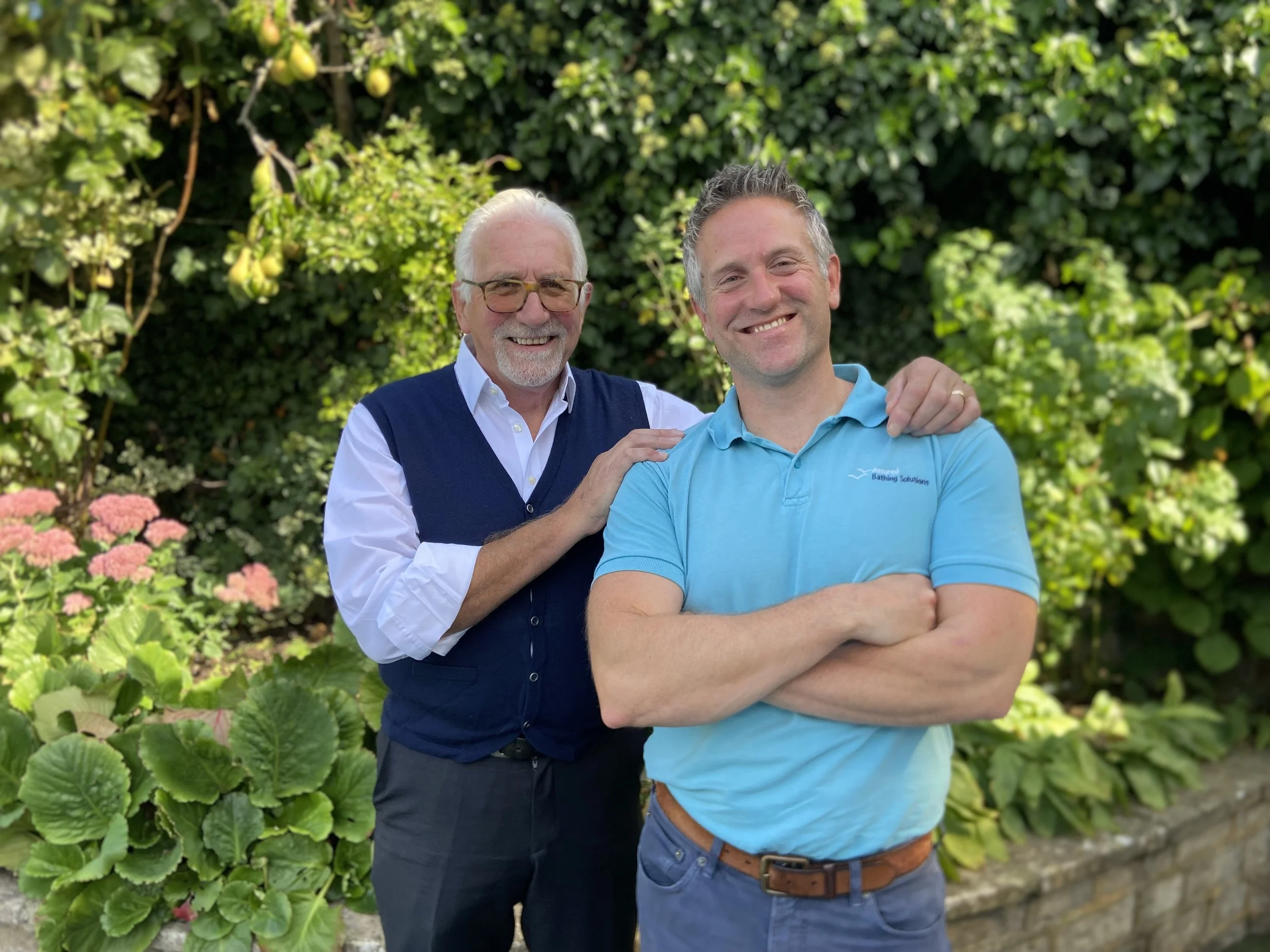Rethinking ‘Later Life’: Why Independence Is the New Currency of Care
When I meet someone considering a bathroom adaptation, they rarely tell me they want “just more years.” What they want, always, is to live those years on their own terms — to wake, shower, dress, and move around their home without needing to ask for help. In a rapidly ageing UK, perhaps this quest for autonomy is the most precious measure of care.
— David Eatwell, Director of Assured Bathing Solutions
Ageing Is Not a Distant Future — It’s Here
Across the United Kingdom, there is a quiet crisis unfolding in our homes. As the population ages, many older adults are facing slipping independence — not because of illness alone, but because everyday environments, especially bathrooms and home layouts, are not designed for longer life. When the most routine tasks become risky, dignity, comfort, and a sense of control slowly erode.
There are now over 22 million people in England aged 50 and above, representing nearly two in every five people. Almost 11 million are aged 65 or older. That number is projected to rise steadily over the coming decades. Yet many homes remain fundamentally unchanged from decades ago. Bathrooms with high thresholds, slippery surfaces, and poor lighting often fail those who are ageing. Falls in these environments impose steep costs on individuals, families, and the NHS.
Why ‘Living Longer’ Isn’t Enough
Living longer has become a milestone many expect. But longevity alone loses its value if what follows is dependency, fear, or frequent hospital visits. Among people aged 65, one in three falls at least once per year. For those over 80, nearly one in two — often due to hazards in the home, with bathrooms among the most dangerous spaces.
These are not just statistics — they are warnings telling us that the way we design homes, the choices we make about safety, and how care is delivered must adapt.
The financial weight is immense. In England, unaddressed fall hazards in homes are estimated to cost the NHS £435 million annually. Moreover, fragility fractures — many resulting from falls — cost the UK around £4.4 billion, with a large portion borne by social care. These are costs that, in many cases, could be mitigated with foresight and smarter home adaptation.
Autonomy as the True Measure of Good Ageing
For many in later life, what matters most isn’t adding years to life, but retaining freedom, dignity, and control over day-to-day living. Being able to move around confidently, perform daily routines safely, and preserve independence enhances mental health, reduces social isolation, and strengthens community connection.
True care should not merely respond to decline — it should anticipate it. Home adaptations — whether installing walk-in showers, adjusting kitchen counters, adding stairlifts, or removing thresholds — are about preserving autonomy, safety, and the ability to live life on one’s own terms. Independence is the real currency of care, and it must be protected.
The Broader Impact: NHS, Families, and Society
The benefits of home adaptations extend far beyond individual wellbeing. Hospital wards are under pressure; each fall can trigger longer hospital stays, secondary complications, and higher social care costs. Preventing even a portion of these incidents frees NHS resources, reduces readmissions, and eases the burden on unpaid carers — who are already stretched.
Families also bear the emotional and practical toll when a once-independent relative loses autonomy. Care decisions become more stressful, and the risk of institutional care looms, particularly in rural areas or places with limited mobility support.
Home Adaptations: A Viable Alternative to Care Homes
For many families, the financial reality of long-term residential care is daunting. The average cost of a care home place ranges from £800–£1,160 per week for residential care and £1,000–£1,410 per week for nursing care, equating to £40,000–£70,000+ per year.
Almost four in ten care home residents (37%) are forced to self-fund these fees. And with 76% of people nationwide concerned they won’t be able to pay for care and half (49%) having no savings put aside, the question of affordability is becoming more pressing.
Meanwhile, the care sector is underfunded, with an annual shortfall of £2.3 billion in England alone. Against this backdrop, investing in home adaptations — from accessible bathrooms to mobility-friendly living spaces — offers a sustainable alternative for a fraction of care home costs. By enabling older adults to live safely and comfortably at home, families can improve quality of life and delay or avoid prohibitively expensive care home placements.
Acting Now Makes a Real Difference
Falls cost the NHS billions each year, not only in financial terms but in hospital beds and ambulance calls. Yet many could be prevented with simple changes like non-slip flooring, grab rails, or step-free showers. Preventing just one accident can mean the difference between returning home safely or entering a cycle of hospital stays and long-term care.
The impact goes beyond senior individuals. Good design supports us all: younger people recovering from accidents, those with mobility limits, carers, and families. Accessible bathrooms and safe home design are not just “elderly issues” — they are part of inclusive, resilient communities.
When Family Businesses Make It Personal
My drive to do this work is personal. Having supported my own ageing grandparents, I’ve seen first-hand how even small adaptations — whether it’s hearing aids or simple changes to the home — can restore dignity, trust, and a sense of control. As a family business, we bring that same care into every project, treating customers as we would our own. That experience drives how we approach every project: not as a transaction, but as a partnership with whole families at a critical stage of life.
Yet too many people still struggle to access the solutions that could keep them safe and independent. From walk-in showers and adapted kitchens to step-free entries, the options are there, but awareness and support are lacking. Councils and health services must make the process clearer and faster, while the rest of us — local businesses, charities, healthcare providers — need to work together to bridge the gap. For families navigating these decisions, having someone who can explain options, provide guidance, and offer a home assessment can make all the difference — ensuring that independence and safety are truly within reach.
Author: David Eatwell
David Eatwell is the Director of Assured Bathing Solutions, a Gloucestershire-based family business specialising in safe, accessible, and stylish bathroom adaptations for older adults and people with limited mobility. With a strong focus on independence and long-term quality of life, David and his team work closely with families to create practical solutions that help people remain in their own homes for longer.


